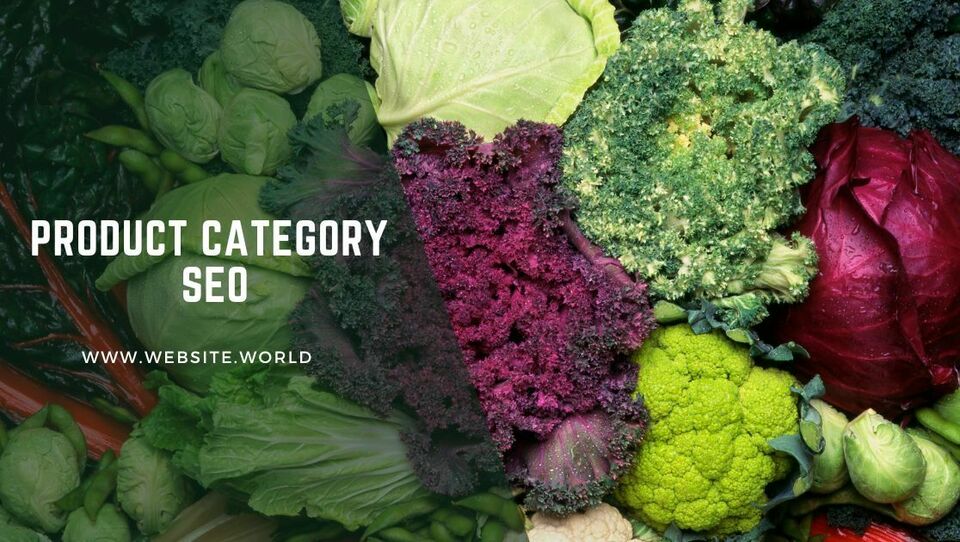Best Product Category SEO Strategies

Product categories help organise products into related groups to make it easier for customers to find the products they are looking for. Product category SEO refers to the things things done to increase the likelihood of the individual category page being noticed and displayed by a search engine in SERPs (search engine result pages).
The SEO optimisation of product categories can be done at anytime, just like all SEO work. Below we've listed the key benefits that doing so can bring, as well as five key optimisation tasks you can undertake for your product categories.
Why Use Product Category SEO Optimisation?
A category page plays a significant role in the customer's journey through a website. Often a customer may know the type of product they want, but not the specific name or unique options it has. A product category is targeted specifically at what the product does, and receives visitors who are in the decision making process.
Specifically working towards improving your search engine optimisation for these pages can provide you with increased traffic to individual categories from where the visitor can learn more about the product choices available.
There's the opportunity to position your brand as a leader in that category by ranking well in SERPs and as category pages are generally discovered by broader search terms, this can increase your online visibility. Also focusing upon broad search terms within the category page can free up opportunities for product pages to focus on ranking for more specific keywords and phrases.
Key Considerations When Optimising Product Category SEO
By its very nature, a product category page contains mostly product photos, a heading and maybe a short blurb, navigational links, search filters and has a minimal appearance. Deciding to add new content containing the keyword phrases you want to rank for shouldn't be taken lightly. Add too little content and you may not improve your rankings, while too much may clutter up the page and be distracting to visitors who then leave your site due to its reduced functionality.
It's a bit of a balancing act using both UX and SEO by:
- keeping the design simple and focused on product photos
- adding enough text that you can target keywords but not overwhelm the page appearance
SEO professionals have managed to meet these things by:
- placing content strategically on the page, with a brief introduction at the top with larger pieces of content at the bottom underneath all of the product photos.
- creating shopping guides which explain to the customer how to choose the most suited product for themselves from the category.
- using FAQs to answer specific questions in bullet points.
- providing a value statement about how the products are made and materials used to add specific keywords suited to the category.
Google analyst John Mueller gave only four pieces of information to guide website owners on category optimisation:
- avoid keyword stuffing
- create internal links to category pages
- grow external links to category pages
- make it easy for the visitor to navigate from category to product pages
There doesn't seem to be an approximate quantity of words required to rank highly either. Instead it is likely to be a combination of SEO tasks.
5 Product Category SEO Tasks
Google has multiple factors it considers when ranking a website, of which these five SEO tasks may play a part:
- Identify and track the product keywords - the words and phrases you believe a customer uses to look for a specific product category may be different to what they actually use. These words can also change over time, making tracking average monthly searches an important task.
- Use clean and simple URLs - using a short URL which contains the keyword for that page makes it useful for both search engines and website users. For instance, www.mywebsite.co.nz/sneakers contains the keyword sneakers for the Sneaker category, which is more beneficial than www.mywebsite.co.nz/970347-98.
- Use alt tags for images on category pages - alt text or alt tags are pieces of text which describe an image for search engines, as they cannot 'read' and index images.
- Showcase popular products - highlighting the most popular or best selling products on category pages not only gets them extra attention, but can also help create powerful links to specific products.
- Look for backlink opportunities - backlinks from other websites to individual product categories are a solid signal to search engines that a category has value, and is yet another way to bring new traffic to a category page from a site the visitor already knows and trusts.
Our growing collection of SEO resources contains further details on how you can improve upon your website's search engine optimisation. Or if you would like to outsource your SEO, get in touch and we can make some recommendations for you.
Posted: Thursday 18 November 2021

